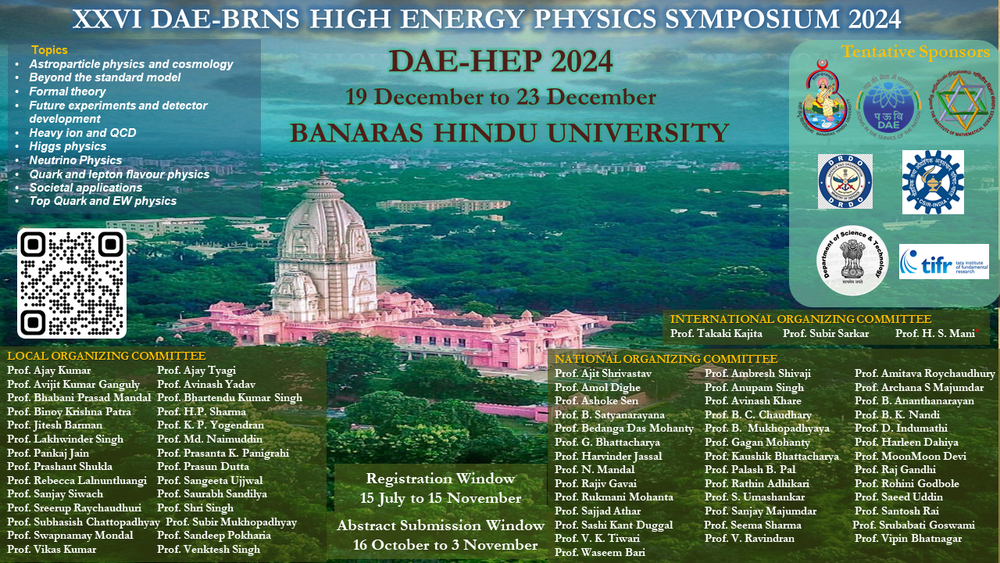Speaker
Description
Strangeness enhancement has long been considered as a signature of the quark-gluon plasma formation in heavy-ion collisions. Strangeness enhancement has also been observed in small systems at the LHC, but the underlying physics is not yet fully understood. This motivates studies of strange hadron production in small systems at RHIC, where the energy density of the created system is expected to be smaller than that at the LHC and therefore a hot and deconfined medium is less likely to be created. Results on the multiplicity dependence of strange hadron production in small systems can be compared to peripheral heavy-ion collisions, and help to understanding the role of event multiplicity in strange hadron production. Study of rapidity asymmetry ($\rm Y_{Asym}$) of the strange hadron production and nuclear modification factors ($ \rm R_{dAu}$) in $d$+Au collisions can also give insight on cold nuclear matter effects.
We present measurements of (multi)-strange hadrons ($K_S^0$, $\Lambda$, $\Xi$ and $\Omega$) in $d$+Au collisions at $\sqrt{\rm s_{\rm NN}}$ = 200 GeV, collected by STAR in 2016. We investigate the multiplicity dependence of (multi)-strange hadron transverse momentum ($p_{\rm{T}}$) spectra, $p_{\rm{T}}$-integrated yields dN/dy, average transverse momentum ($\langle p_{\rm{T}} \rangle$), and yield ratios to pions. $ \rm R_{dAu}$ and $\rm Y_{Asym}$ for these particles will be presented. The implications of these measurements on the possible formation of a hot and deconfined medium and the origin of strangeness enhancement in small systems will be discussed.
| Field of contribution | Experiment |
|---|

